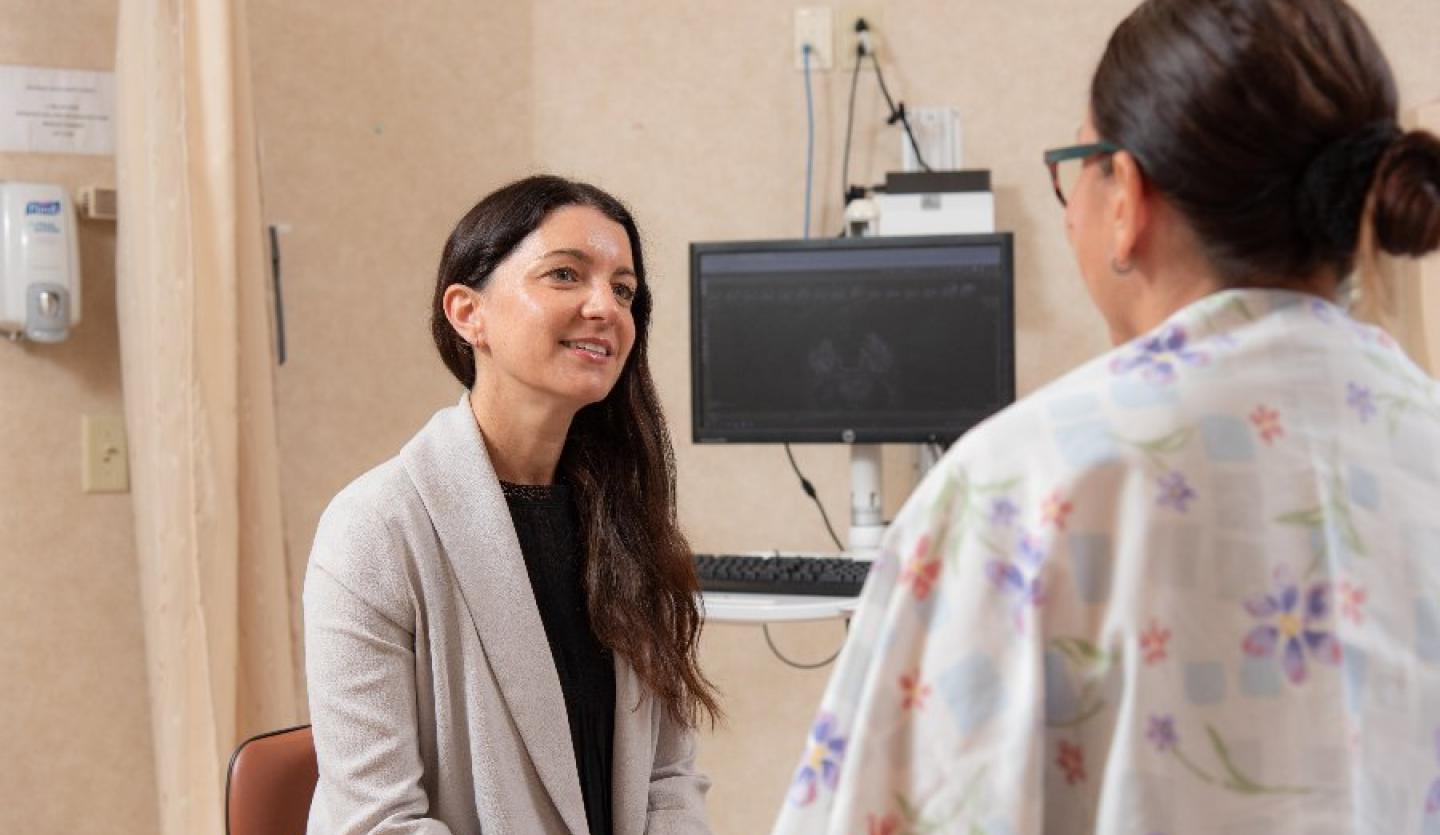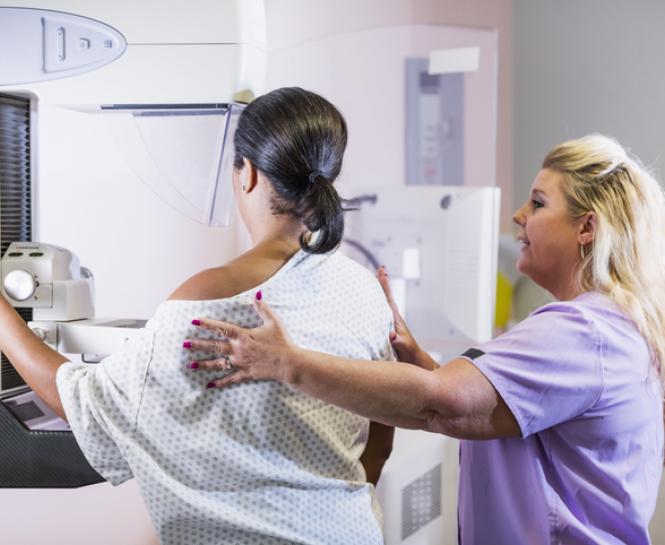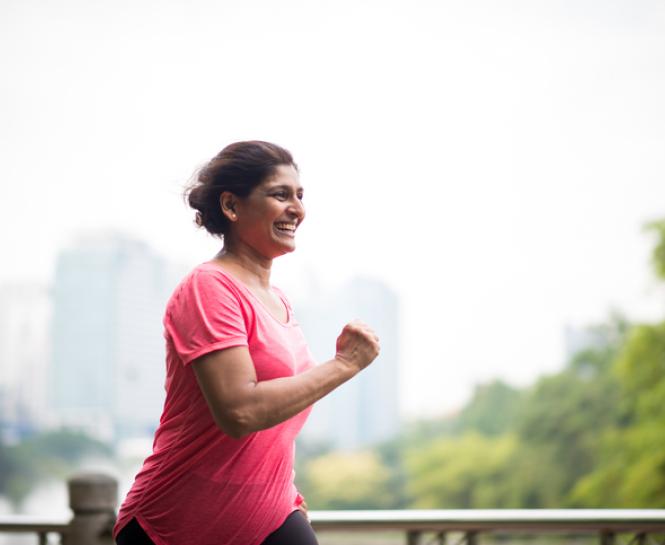“Patients getting a mammogram can often feel apprehensive or anxious because they have misinformation,” said Jana Deitch, MD, Director of the Breast Health Program at St. Catherine of Siena Hospital. “Knowing what to expect eases the worry. Patients often say after their mammogram that it was easier than anticipated.”
What is a mammogram?
A mammogram takes low-dose X-ray images of breasts to screen for breast cancer.
“Routine self-examination of your breasts is important,” said Dr. Deitch. “A mammogram, however, allows for identifying abnormal changes in the breast tissue not felt during a self-exam. Imaging the breasts is essential to catching breast cancer early when it is most treatable.”
A screening mammogram is for patients who do not have signs of breast cancer. A diagnostic mammogram is for patients who have had a lump detected, are experiencing breast pain or discharge, or have changes in the shape and size of the breasts.
A baseline mammogram is your first screening mammogram that can be used for comparison when you have future annual mammograms.
When should I get a mammogram?
The U.S. Preventive Services Task Force (USPSTF) has recommended all women start routine breast cancer screening at 40. Talk to your doctor about when you should schedule your first mammogram.
Read more about recommended mammogram guidelines.
How do I prepare for a mammogram?
On exam day, you cannot wear the following that can interfere with reading the results.
- Deodorant
- Lotion
- Perfume
- Oil
If you did not complete medical forms before exam day, you will complete medical paperwork to provide your medical and family medical history. You will also need to identify if:
- You are breastfeeding
- You are, or could be, pregnant
- You have breast implants
What happens during the mammogram?
You will be given a medical gown and asked to undress from the waist up. Once in the exam room, a trained technician will guide you through the procedure as they take multiple images of your breasts from different angles.
The technician will:
- Scan each breast separately.
- Position the breast on the bottom plate of the mammography machine.
- Lower the upper plate of the mammography machine to compress each breast.
- Take X-ray images of each breast at different angles.
Does a mammogram hurt?
A mammogram is a noninvasive exam. Your technician will ask you to stay still and hold your breath for several seconds while the mammography machine captures images. Each breast scan takes between 10-15 seconds.
Some patients experience discomfort and feel pressure when the technician lowers the plate and compresses the breasts for scanning.
“Remember, the discomfort is only temporary, and the scans do not take long,” said Dr. Deitch. “Talk to your technician if you need to pause between scans.”
In addition to talking to your technician, you can also:
- Avoid scheduling the mammogram near the time of, or during, your period when breasts can be more tender.
- Limit salt and caffeine before the exam, which can make breasts tender.
- Use calming methods like taking deep breaths.
What if I have dense breasts?
According to the American Cancer Society, women with dense breasts have a higher risk of breast cancer.
Dense breast tissue can make it harder for radiologists to detect cancer on a mammogram. If you have dense breasts, talk to your doctor about 3D mammography (digital breast tomosynthesis), breast ultrasound and breast MRI.
When will I get my results?
Getting your results will depend on the time of your appointment, your facility, and your radiologist.
Will I need further testing?
A mammogram will show if you have:
- Breast calcifications
- Breast masses
- Breast asymmetries
- Breast distortions
If any breast changes are detected, your doctor will advise if you need further testing and a biopsy.
If your mammogram does not show breast changes, your doctor will recommend you schedule your next exam for the following year.
“In between your annual mammography, you should continue breast self-exams and talk to your doctor if you notice any changes to your breasts,” said Dr. Deitch.
Schedule your mammogram at Catholic Health
Catholic Health offers convenient locations in Nassau and Suffolk counties.
- Good Samaritan University Hospital Women's Imaging Center (West Islip, NY)
- Bishop McGann Women’s Imaging Center at Mercy Hospital (Rockville Centre, NY)
- St. Catherine of Siena Diagnostic Imaging (Smithtown, NY)
- Siena Women’s Health Outpatient Diagnostic Pavilion (Smithtown, NY)
- St. Charles Hospital Radiology (Port Jefferson, NY)
- The Women’s Health Center of St. Francis Hospital & Heart Center® (Roslyn, NY)
Call 866-MY-LI-DOC (866-695-4362) to find a Catholic Health physician near you.






